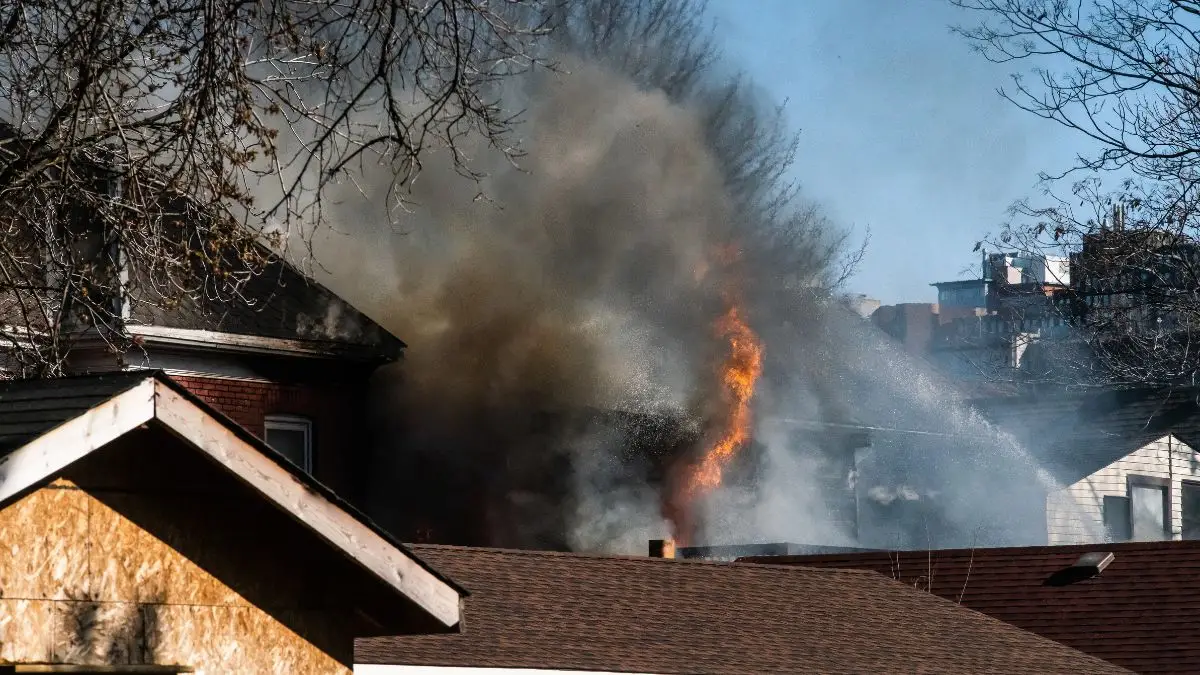Unsold Homes Surge Across US as Housing Market Stalls
I’ve been watching the housing market closely this year — and I’ll be honest, the shift over the past couple of months feels different. It’s not just about high interest rates or affordability problems anymore. Something deeper is going on.
Across the U.S., more and more homeowners are choosing to pull their homes off the market instead of lowering the price. You’ve probably noticed it too — listings disappearing from Zillow or Redfin without ever being sold. According to
Realtor
, de-listings are up nearly 50% year-over-year. That’s not a blip. That’s a statement.
But what are sellers really trying to say?
For a while, the market had a rhythm. Rates rose, demand cooled, prices adjusted — slow but predictable. Now, that rhythm’s broken. We have more homes on the market than last year, but many just… aren’t selling. In fact, there’s over $700 billion worth of homes sitting unsold nationwide, according to Business Insider. And instead of negotiating or dropping the price, sellers are saying: Forget it. We’ll wait.
This isn’t just a data point — it’s a shift in mindset.
And if you’re thinking about buying or selling, this moment could change your game plan entirely.
What the Numbers Say: The Market Isn’t Just Slowing—It’s Stalling
If you’re trying to make sense of what’s happening out there, the numbers paint a pretty sharp picture.
Nationwide, home inventory has surged by nearly 29% compared to last year, according to Realtor data. But here’s the catch: that extra supply isn’t translating into faster sales. Instead, homes are sitting… and sitting. A recent
Newsweek
report highlighted that many of these listings are just going stale, with sellers pulling out before cutting their prices.
It’s almost like both sides — buyers and sellers — are frozen. Sellers aren’t willing to budge on pricing, and buyers are hesitant to jump in at 7% mortgage rates.
You might think that would lead to a price crash, but no — median listing prices are still hovering around $440,000, and actual sale prices aren’t dropping much either. We’re stuck in this weird middle zone: too expensive to buy, too risky to sell.
The real question is, how long can this last?
And with many first-time buyers sitting on the sidelines, the rental market is quietly booming again —
this breakdown explains why that trend might stick around
.
Why Sellers Would Rather Delist Than Drop the Price?
Let me tell you what I’m seeing — and maybe you’re seeing it too. Sellers don’t want to lose. Not just money, but perceived value.
That dream number they saw during the 2021 peak? They’re still emotionally tied to it. And honestly, who can blame them? But the market’s changed. According to report, nearly one in five homes now gets pulled off the market unsold, and de-listings are up 47% year-over-year.
So what’s driving this?
It’s part denial, part strategy. Some homeowners think rates will drop soon, so they’re just sitting tight. Others have strong equity — they don’t have to sell, so they’d rather wait than accept less. And in cities like Phoenix, Austin, and Denver, where price cuts have become common, many sellers are just stepping back altogether.
If you’re thinking about listing, this is the landscape you’re stepping into. It’s not just about finding a buyer — it’s about managing your expectations, too.
Have you seen homes getting pulled off the market in your area too? Maybe even your own? Drop a comment and share your experience — it might help someone else make a smarter move.
Where It’s Happening Most: The Metro Markets Leading the Shift
This trend isn’t evenly spread across the country. Depending on where you are, things might feel totally different.
In Phoenix, for example, there are 30 delistings for every 100 new listings, and nearly 34% of homes saw price cuts last month. That’s a massive shift in seller behavior. Houston and Miami are also showing the same pattern — rising inventory, high delistings, and frustrated sellers pulling out mid-stream.
But if you’re in the Northeast or Midwest, things probably feel more stable. Inventory is still tight in places like Boston and Chicago, and some homes are still getting multiple offers. The slowdown hasn’t hit those markets with the same intensity — yet.
The bottom line? This isn’t a national market anymore — it’s regional. If you’re buying or selling, your zip code matters more than ever.
In states like Texas, for example, inventory levels are hitting 14-year highs, and many sellers are facing the same frustration —
here’s what’s really going on in those markets
.
What Buyers Are Thinking — And Why Some Still Aren’t Moving?
You’d think a surge in listings would be a buyer’s dream, right? But strangely, many buyers are still holding back. And if you’re one of them, I get it — this market feels risky.
Redfin recently reported that there are about 490,000 more sellers than buyers — the widest gap in over a decade. That’s a clear sign of imbalance. And still, buyers are cautious. Why? Because high mortgage rates have made monthly payments brutal, and with prices not dropping enough to offset the cost, deals just aren’t penciling out.
Another thing I’ve noticed? Buyers don’t trust the listings anymore. With so many homes lingering for weeks — or even months — it’s hard to tell what’s a deal and what’s just overpriced.
And you’re not alone. According to
Business Insider
, nearly 44% of active listings have been sitting for over 60 days. That kind of stagnation spooks even serious buyers.
So even though the market looks like it’s tipping in your favor, emotionally and financially, it still feels like a gamble.
Lately, I’ve seen more buyers sharing screenshots and stories in one WhatsApp real estate update group — people comparing stale listings, warning others about overpriced traps, and even sharing price drop alerts in real time. These kinds of peer-to-peer insights are making a difference when listings alone don’t tell the whole story.
What’s Next? Here’s What to Watch in the Second Half of 2025
If you’re trying to figure out what happens next — whether you should buy, sell, or just wait — you’re not alone. Everyone’s trying to time the market, but let me tell you: timing is getting trickier by the day.
Mortgage rates are expected to stay above 6.5% for the rest of the year. Goldman Sachs doesn’t see a major drop coming anytime soon. So if you’re hoping for a sudden affordability boost — don’t hold your breath.
That said, we might see more “accidental listings” pulled off the market, especially if delisting becomes the go-to move for frustrated sellers. Fewer new listings + more pullbacks = tighter inventory again by late fall.
But here’s the thing you should really watch: regional price gaps. In some cities, prices are already adjusting. In others, they’re sticking — but only because sellers are holding the line. Once even a small wave of distress selling begins, that could shift the pricing landscape fast.
If you’re planning a move before 2026, this is the time to get hyper-local. Watch your zip code, your neighborhood, even your street. National headlines can’t help you here.
Interestingly, while regular sellers are backing off, investors have doubled down in 2025, scooping up homes at record rates —
you can see the data here
.
What This Means for You — Whether You’re Selling or Buying
Let’s break it down simply.
If you’re a
seller
, here’s what I’d do:
- Don’t list just because “summer is usually hot.” This year isn’t typical.
- Study your local competition — how many similar homes are sitting unsold?
- Be willing to adjust price expectations — or wait out the storm with a rental fallback.
If you’re a
buyer
, now’s your chance to:
- Negotiate harder. Especially on homes that have been sitting 30+ days.
- Watch for withdrawn listings — some sellers will quietly test the market again off-MLS.
- Get your financing locked in. If rates drop even slightly, good inventory will move fast.
And if you’re
on the fence
, I get it. There’s no shame in sitting this one out for a few months — as long as you’re staying informed and ready.
Final Thoughts
What we’re seeing right now isn’t just a cooling market — it’s a reset. The old rules don’t apply, and both buyers and sellers are trying to navigate a space where no one really has the upper hand.
Homes are sitting. Prices aren’t dropping fast enough. Sellers are walking away. Buyers are hesitating. Agents are trying to stay optimistic, but they feel the slowdown too.
So what should you take away from all this?
Simple: be strategic, not emotional. Don’t chase 2021 dreams. Don’t get stuck waiting for a “perfect” dip. This market rewards people who are alert, flexible, and realistic.
And if you’ve made it this far into the article, you’re already ahead of most.
Want more real-world housing trends and data-driven updates like this? Head over our
Real Estate & Homeownership
section for the latest.
Disclaimer:
This article is for informational purposes only and does not constitute financial or real estate advice. Market conditions can vary significantly by region. Always consult a licensed professional before making property-related decisions.
Table of Contents
-
What the Numbers Say: The Market Isn’t Just Slowing—It’s Stalling
-
Why Sellers Would Rather Delist Than Drop the Price?
-
Where It’s Happening Most: The Metro Markets Leading the Shift
-
What Buyers Are Thinking — And Why Some Still Aren’t Moving?
-
What’s Next? Here’s What to Watch in the Second Half of 2025
-
What This Means for You — Whether You’re Selling or Buying
-
Final Thoughts




